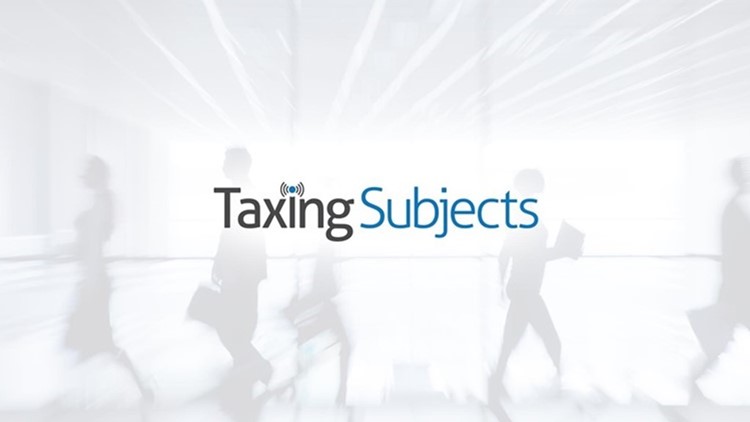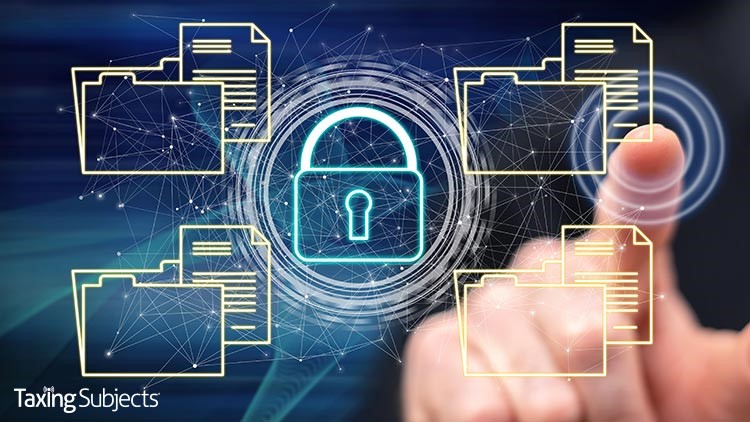by | Aug 28, 2020 | Tax Tips and News
The Internal Revenue Service has approved the use of e-signatures on certain forms that can’t be filed electronically. The move comes in response to the coronavirus pandemic, in order to protect the health of taxpayers and tax professionals alike.
The change helps reduce in-person contact while lessening the risks to taxpayers and tax professionals by allowing them to work remotely and file forms in a timely manner.
“We take the health and safety of the nation’s taxpayers, the tax professional community and our employees very seriously,” said IRS Commissioner Chuck Rettig. “Expanding the use of digital signatures is an important step during COVID-19 to help tax professionals. We understand the importance of digital signatures to the tax community, and we will continue to review our processes to determine where long-term actions can help reduce burden for the tax community, while appropriately balancing that with critical security and protection against identity theft and fraud.”
The Form 1040, U.S. Individual Income Tax Return, already uses an electronic signature when filed electronically, either by using a taxpayer self-selected PIN if self-prepared, or a tax-preparer selected PIN if using a tax professional.
More than 90% of Form 1040s are filed electronically. The IRS recommends taxpayers consider e-filing forms this year whenever possible due to COVID-19.
Which forms will temporarily accept e-signatures?
At least 10 forms have been earmarked to take a digital signature if mailed by or on Dec. 31, 2020:
- Form 3115, Application for Change in Accounting Method;
- Form 8832, Entity Classification Election;
- Form 8802, Application for U.S. Residency Certification;
- Form 1066, U.S. Income Tax Return for Real Estate Mortgage Investment Conduit;
- Form 1120-RIC, U.S. Income Tax Return For Regulated Investment Companies;
- Form 1120-C, U.S. Income Tax Return for Cooperative Associations;
- Form 1120-REIT, U.S. Income Tax Return for Real Estate Investment Trusts;
- Form 1120-L, U.S. Life Insurance Company Income Tax Return;
- Form 1120-PC, U.S. Property and Casualty Insurance Company Income Tax Return; and
- Form 8453 series, Form 8878 series, and Form 8879 series regarding IRS e-file Signature Authorization Forms.
These forms cannot be e-filed and are generally printed and mailed. The IRS will not specify which digital signature product tax pros have to use.
The IRS also assures it will monitor this temporary option for e-signatures and determine if additional steps are needed.
– Story provided by TaxingSubjects.com
by | Aug 26, 2020 | Tax Tips and News
Some 50,000 individuals who had a portion of their Economic Impact Payment diverted to pay their spouse’s past-due child support will soon get a check to make up the difference.
The Internal Revenue Service says the catch-up payments are due to be issued in early-to-mid-September. They will be mailed as checks to eligible spouses who submitted Form 8379, Injured Spouse Allocation, along with their 2019 federal income tax return, or in some cases, their 2018 return.
These spouses do not need to take any action to get their money, since the IRS will automatically issue the portion of the EIP that was applied to the other spouse’s debt.
The IRS says it understands that some individuals didn’t file Form 8379 and didn’t get their portion of the Economic Impact Payment for the reasons mentioned. These individuals also don’t need to take any further action and don’t need to submit Form 8379.
The IRS stresses that while it doesn’t have a timeframe, the agency will automatically issue the portion of the EIP that was applied to the other spouse’s debt at a later date.
To check the status of their payment, affected taxpayers can go online to the IRS’ Get My Payment Tool, which is available only on the IRS.gov website.
Taxpayers can also get more information in the Receiving My Payment section of the Frequently Asked Questions in the Economic Payment Information Center on IRS.gov.
– Story provided by TaxingSubjects.com
by | Aug 25, 2020 | Tax Tips and News
Taxpayers in California and Iowa have a little extra time to file their tax returns and pay tax due, thanks to relief measures announced by the Internal Revenue Service.
Victims of California wildfires getting IRS disaster relief.
California has been hit by a series of wildfires going back to Aug. 14. Taxpayers now have until Dec. 15, 2020 to file their various individual and business tax returns and make any tax payments.
The IRS says the relief is for taxpayers and businesses in any area designated by the Federal Emergency Management Agency (FEMA) as qualifying for individual assistance.
This currently includes Lake, Monterey, Napa, San Mateo, Santa Cruz, Solano, Sonoma and Yolo counties in California. Taxpayers in other localities that are added to the disaster declaration later will automatically get the same relief.
The most current list of eligible counties and locations is available on the disaster relief page on IRS.gov.
The IRS says these relief measures postpone various deadlines that occurred starting Aug. 14.
“As a result, affected individuals and businesses will have until December 15, 2020, to file returns and pay any taxes that were originally due during this period,” an IRS release states. “This means individuals who had a valid extension to file their 2019 return due to run out on Oct. 15, 2020, will now have until Dec. 15, 2020, to file.”
It should be noted, however, that because payments related to these 2019 returns were due by July 15, 2020, those payments are not included in the relief package.
The Dec. 15 deadline also applies to quarterly estimated income tax payments due Sept. 15 and the quarterly payroll and excise tax returns normally due Oct. 31. It also applies to tax-exempt organizations operating on a calendar-year basis that had a valid extension date to run out on Nov. 15.
Businesses with extensions also have the additional time, including, among others, calendar-year corporations whose 2019 extensions run out on Oct. 15.
IRS is also providing relief for Iowa wind storm victims.
The IRS is also offering filing and payment for victims of a derecho storm that affected Linn County in Iowa. While the deadline for both filing and payment is now Dec. 15, 2020, other deadlines may differ from the California declaration.
At present, the Iowa relief applies only to residents and businesses in Linn County, but may be expanded when other localities are added to the declaration.
The IRS disaster relief page has details on the returns, payments and tax-related actions qualifying for the additional time.There’s no need for taxpayers in California or Iowa to contact the IRS in order to claim their relief. The IRS automatically applies the relief to a tax return or payment by reading the account’s address on record.
However, if an affected taxpayer receives a late filing or late payment penalty notice from the IRS that has an original or extended filing, payment or deposit due date falling within the postponement period, the taxpayer should call the number on the notice to have the penalty abated.
Individuals and businesses in a federally declared disaster area who suffered uninsured or unreimbursed disaster-related losses can choose to claim them on either the return for the year the loss occurred (in this instance, the 2020 return normally filed next year), or the return for the prior year (2019).
Be sure to write the FEMA declaration number – 4557 for Iowa or 4558 for California − on any return claiming a loss. See Publication 547 for details.
Source: IR-2020-191
– Story provided by TaxingSubjects.com
by | Aug 24, 2020 | Tax Tips and News
IRA owners, beneficiaries and workplace retirement plan participants who got a Required Minimum Distribution (RMD) this year have until Aug. 31 to rollover or repay the distribution in order to avoid being taxed on the payments.
The Coronavirus Aid, Relief, and Economic Security Act – also known as the CARES Act – waives RMDs during 2020 for IRAs and other retirement plans. It does the same for beneficiaries with inherited accounts.
The CARES Act waiver includes RMDs for individual who turned age 70 1/2 in 2019 and took their first RMD in 2020. Roth IRAs, however, don’t require withdrawals until after the death of the owner.
RMDs are eligible for rollover.
Individuals who took a Required Minimum Distributions in 2020 – including those who turned 70 1/2 during 2019 – have the option of putting their distribution back into the original account, or some other qualified plan.
Thanks to suspension of the RMD rule, RMDs taken during 2020 are considered eligible for rollover. So RMDs can be rolled over to another IRA, another qualified retirement plan, or returned to the original plan. But the rollover, no matter to what account, must be done by Aug. 31 to avoid paying taxes on the distribution.
IRS Notice 2020-51 also provides that the one-rollover-per-12-month-period limitation and the restriction on rollovers to inherited IRAs don’t apply to this repayment.
The CARES Act provisions apply to most retirement plans. This includes traditional IRAs, SEP IRAs, SIMPLE IRAs, 401(k) plans, 403(b) plans, 457(b) plans, profit sharing plans and other defined contribution plans.
The RMD suspension, however, doesn’t apply to qualified defined benefit plans.
Find more information on the CARES Act and retirement plans – including FAQs – visit the IRS’s Coronavirus-related relief for retirement plans and IRA questions and answers page.
Want to learn more about Drake Software products?
Call 800.890.9500 or visit the product-features pages for Drake Tax, Drake Documents, Drake Accounting, and Drake Portals to learn more about Drake Software products. Check out the Buy or Renew page if you’re ready to get started today.
– Story provided by TaxingSubjects.com
by | Aug 21, 2020 | Tax Tips and News
The Internal Revenue Service and its partners on the Security Summit are reminding the nation’s tax professionals that having a written information security plan is more than just a good idea—it’s the law.
The Security Summit is made up of representatives from the IRS, state tax agencies and the income tax industry. As security threats continue to increase during the COVID-19 pandemic, Security Summit partners are also recommending practitioners create an emergency response plan to be used in the event of a data theft.
Contacting the IRS should be the first step in the plan in order to quickly protect tax pros and their clients.
This is the last in the Security Summit’s Working Virtually series.
Making a plan for protecting data and reporting theft is the last in a five-part series called Working Virtually: Protecting Tax Data at Home and at Work. The special Security Summit series has spotlighted basic security steps for all manner of tax professionals, but is tailored for those working remotely or social distancing due to the COVID-19 outbreak.
“COVID-19 has changed the way many of us work, and more tax professionals are working from home. With these changes, there are new risks from cybercriminals. Our special Security Summit series was designed to give you critical information protect your clients and protect your business,” said IRS Commissioner Chuck Rettig.
“We all have a role in protecting taxpayer data, and the tax professional community is a critical part of that effort,” Rettig added. “It’s more important than ever to take appropriate security precautions, protect remote work sites, use two-factor authentication and plan ahead for all possibilities.”
Remember: FTC requires a written security plan.
Federal law administered by the Federal Trade Commission requires all “professional tax preparers” to create and maintain a written information security plan. Each document should be appropriate to the firm’s size and complexity.
The plan must also be appropriate to the nature and scope of the company’s activities as well as the sensitivity to the customer information it handles. For example, a plan for a sole tax practitioner would be much different than the plan for a global, multi-partner firm.
No matter what their circumstance, tax pros working from home must ensure client data is protected just as it would in an office setting.
What does the Safeguards Rule require?
The FTC requires each company, as part of its plan, must:
- designate one or more employees to coordinate its information security program;
- identify and assess the risks to customer information in each relevant area of the company’s operation and evaluate the effectiveness of the current safeguards for controlling these risks;
- design and implement a safeguards program and regularly monitor and test it;
- select service providers that can maintain appropriate safeguards, make sure the contract requires them to maintain safeguards and oversee their handling of customer information; and
- evaluate and adjust the program in light of relevant circumstances, including changes in the firm’s business or operations, or the results of security testing and monitoring.
It should be noted that the FTC is currently taking a second look at the Safeguards Rule and is proposing new regulations. Tax pros should be alert to any changes in the rule and its effect on the tax preparation community.
IRS Publication 4557, Safeguarding Taxpayer Data, outlines critical security measures for all tax professionals. It also includes information on how to comply with the FTC Safeguards Rule and includes a checklist of items for a prospective security plan. Practitioners are asked to focus on key areas such as employee management and training; information systems; and detecting and managing system failures.
For those preparers who think they may just forego creating a security plan, the IRS may treat a violation of the FTC Safeguards Rule as a violation of IRS Revenue Procedure 2007-40, which sets the rules for tax professionals participating as an Authorized IRS e-file Provider.
Your plan should include a response to data theft.
Tax professionals who suffer a theft of their data should report the crime to the IRS immediately. Speed is critical, so that actions can be taken to protect taxpayers — and the firm.
The Security Summit recommends practitioners create a response plan so that action can be taken quickly and contact information is readily available.
If a client or the firm are the victim of data theft, immediately:
- Report it to the local IRS Stakeholder Liaison. Stakeholder Liaisons will notify IRS Criminal Investigation and others within the agency. Speed is critical. If reported quickly, the IRS can take steps to block fraudulent returns in clients’ names and will assist through the process.
- Email the Federation of Tax Administrators at statealert@taxadmin.org. Get information on how to report victim information to the states. Most states require that the state attorney general be notified of data breaches. This notification process may involve multiple offices.
Find more information at Data Theft Information for Tax Professionals.
Data thieves not only attempt to steal client data, but may also try to steal the tax professional’s identity as well, using their PTINs, EFINs and CAF numbers to file fraudulent returns or to steal even more information.
Thieves may even try to impersonate the tax pro to obtain tax transcripts or other tax records.
To stay informed, tax professionals should routinely check their IRS e-Services e-file Application to see a weekly count of tax returns filed with their Electronic Filing Identification Numbers. Excessive filings are a sign of data theft. The IRS recommends that e-file applications should also be kept up to date.
Circular 230 practitioners also can review weekly the number of tax returns filed using their Preparer Tax Identification Number or PTIN. Again, excessive filings are a sign of data theft.
Preparers with Centralized Authorization File, or CAF numbers, that enable third party access to tax information or representation should keep those records updated. Practitioners should notify the IRS when they no longer need third-party authorization for clients.
Need additional resources?
Tax pros can get help with security recommendations by consulting the recently revised IRS Publication 4557, Safeguarding Taxpayer Data, and Small Business Information Security: The Fundamentals by the National Institute of Standards and Technology.
In addition, Publication 5293, Data Security Resource Guide for Tax Professionals, provides a compilation of data theft information available on IRS.gov. To stay informed, tax pros can stay connected to the IRS through subscriptions to e-News for Tax Professionals and Social Media or visit Identity Theft Central at IRS.gov/identitytheft.
Want to learn more about Drake Software products?
Call 800.890.9500 or visit the product-features pages for Drake Tax, Drake Documents, Drake Accounting, and Drake Portals to learn more about Drake Software products. Check out the Buy or Renew page if you’re ready to get started today.
– Story provided by TaxingSubjects.com
by | Aug 18, 2020 | Tax Tips and News
Receiving a tax refund might be the only thing people like about filing their return, and it looks like some taxpayers are about to get just a little more money from the Department of Treasury.
The Internal Revenue Service today announced that it “will send interest payments to about 13.9 million individual taxpayers who timely filed their 2019 federal income tax returns and are receiving refunds.” As with seemingly everything else in 2020, this is a direct result of the coronavirus pandemic.
Why are 13.9 million taxpayers receiving a tax refund interest payment?
Federal law requires the IRS issue interest payments to taxpayers who file on time after a disaster postpones the filing deadline. In this case, the obvious culprit is COVID-19 pushing Tax Day back to July 15, 2020. But before people start exchanging socially distanced air high fives, there are a few things they’ll need to know:
- Interest payments will not be issued to businesses nor taxpayers who received their refund before April 15
- The interest payment will in most cases not arrive at the same time as the refund payment
- The average interest payment is $18
- The interest payment is taxable if it’s $10 or more
The longer it takes for a timely filed tax refund to arrive after the original deadline (April 15, 2020), the more interest the IRS will owe. And since the interest is calculated using the adjusted quarterly rate (compounded daily), that can sometimes result in using a blended rate for refunds that “span quarters.”
Here are the rates specifically cited by the IRS:
- 5% for the second quarter
- 3% for the third quarter
Interest payments affected by the blended rate will be calculated using “the number of days falling in each calendar quarter.” Perhaps making it a little easier to report a taxable interest payment, the IRS will send letters containing Form 1099-INT at the beginning of next year.
How are these tax refund interest payments being issued?
Taxpayers should generally expect to receive their tax refund interest payment the same way they received their tax refund: “In most cases, taxpayers who received their refund by direct deposit will have their interest payment direct deposited in the same account …. [and] everyone else will receive a check.”
As you well know, many people plan their finances based on the assumption that they will receive a tax refund every year. When everything feels like it’s up in the air, a little good news is welcome—even if it requires some paperwork.
Source: IR-2020-183
– Story provided by TaxingSubjects.com






